Entry Type: Event
Cane Hill, Engagement at
aka: Engagement at Canehill
aka: Engagement at Boston Mountains
Cane Hill, Skirmish at (November 25, 1862)
Cane Hill, Skirmish at (November 6, 1864)
Canfield Race War of 1896
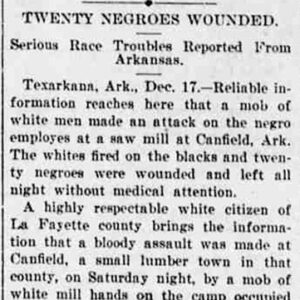 Canfield Race War Article
Canfield Race War Article
Cape Girardeau, Missouri, to the Eleven Point River, Expedition from
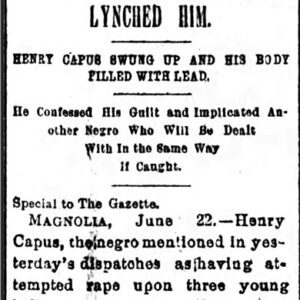 Henry Capus Lynching Article
Henry Capus Lynching Article
Capus, Henry (Lynching of)
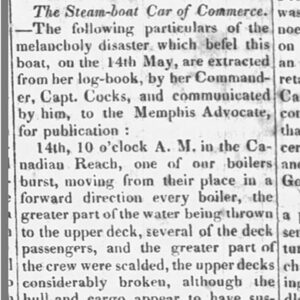 Car of Commerce Steamboat Article
Car of Commerce Steamboat Article
 Caroline Steamboat Article
Caroline Steamboat Article
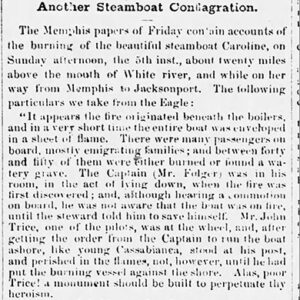 Caroline Steamboat Article
Caroline Steamboat Article
 Carroll County Lynching Article
Carroll County Lynching Article
Carroll County Lynching of 1878
Carroll, George (Execution of)
Carroll, Marion, and Searcy Counties, Scout to
aka: Skirmish at Richland Creek (December 25, 1863)
aka: Skirmish at Stroud's Store
aka: Skirmish at Buffalo River
Carrollton, Skirmish at (August 15, 1864)
Carter, Allen (Lynching of)
Carter, John (Lynching of)
aka: Lonnie Dixon (Execution of)
 Carter Lynching Headlines
Carter Lynching Headlines
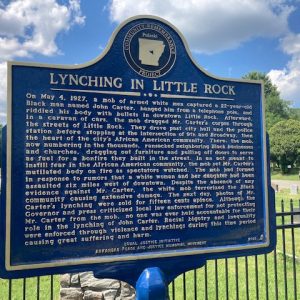 John Carter Memorial
John Carter Memorial
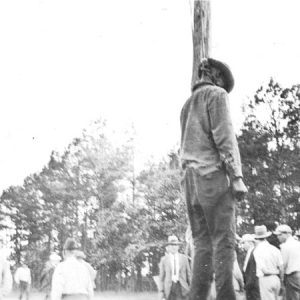 John Carter Lynching
John Carter Lynching
Carter, Nathan (Execution of)
Casat, Deno (Execution of)
Casey, Frank (Execution of)
Cassville, Missouri, to Cross Hollow, Scout from
Cassville, Missouri, to Huntsville and Yellville, Scout from
 Casualties List
Casualties List
Catcher Race Riot of 1923
Cates, Sam (Lynching of)
 Sam Cates Lynching Article
Sam Cates Lynching Article
Cattle Drives
Causby, Robert Albert (Execution of)
Centennial Celebration
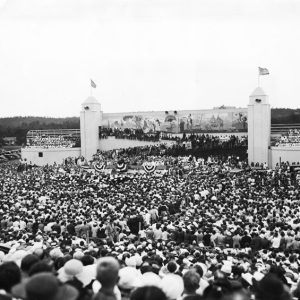 Centennial Celebration
Centennial Celebration
Central High School, Desegregation of
aka: Crisis at Central High
aka: Little Rock Desegregation Crisis
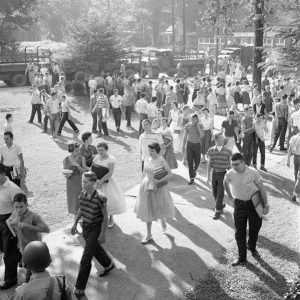 Central High Students
Central High Students
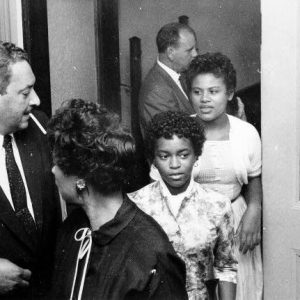 Central High Students Leaving Federal Court, 1957
Central High Students Leaving Federal Court, 1957
Chalk Bluff, Skirmish at (May 1–2, 1863)
Chalk Bluff, Skirmish at (May 15, 1862)
Chambers, Abe (Execution of)
Charity Games of Football (1931)
 Charleston Desegregation Exhibit
Charleston Desegregation Exhibit
Charleston Schools, Desegregation of
Cherokee Bay, Skirmish at
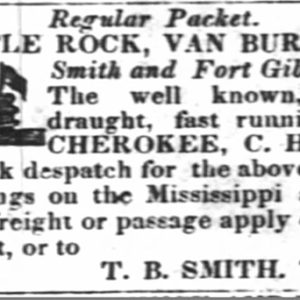 Cherokee Steamboat Ad
Cherokee Steamboat Ad
 Cherokee Steamboat Article
Cherokee Steamboat Article
 Francis Cherry
Francis Cherry




